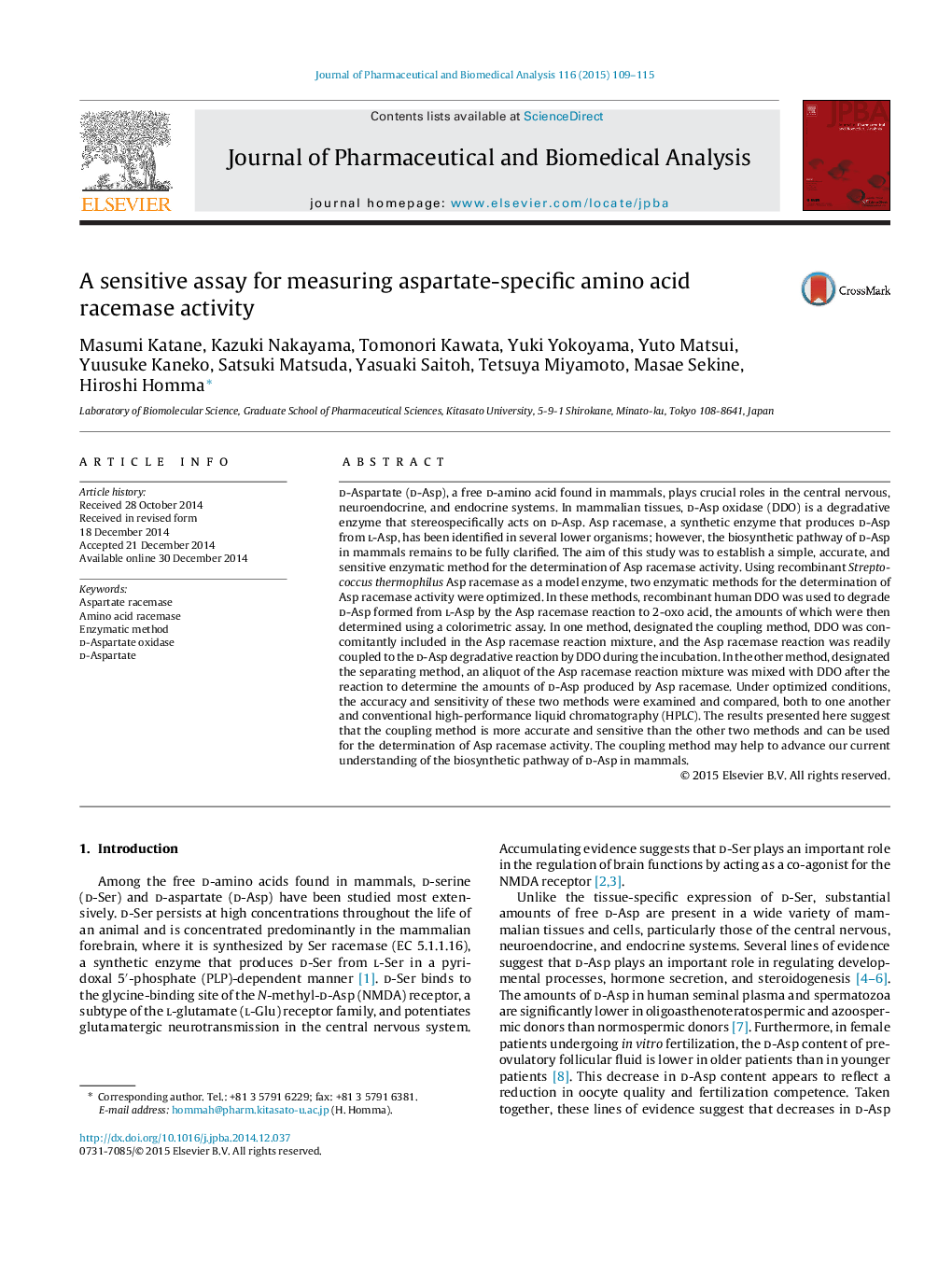| Article ID | Journal | Published Year | Pages | File Type |
|---|---|---|---|---|
| 1220484 | Journal of Pharmaceutical and Biomedical Analysis | 2015 | 7 Pages |
•Two enzymatic methods for the determination of Asp racemase activity were optimized.•Both methods were applicable for studying the kinetic properties of Asp racemase.•The coupling method was more accurate than the other methods.•The coupling method was more sensitive than the other methods.•The coupling method is appropriate for the determination of Asp racemase activity.
d-Aspartate (d-Asp), a free d-amino acid found in mammals, plays crucial roles in the central nervous, neuroendocrine, and endocrine systems. In mammalian tissues, d-Asp oxidase (DDO) is a degradative enzyme that stereospecifically acts on d-Asp. Asp racemase, a synthetic enzyme that produces d-Asp from l-Asp, has been identified in several lower organisms; however, the biosynthetic pathway of d-Asp in mammals remains to be fully clarified. The aim of this study was to establish a simple, accurate, and sensitive enzymatic method for the determination of Asp racemase activity. Using recombinant Streptococcus thermophilus Asp racemase as a model enzyme, two enzymatic methods for the determination of Asp racemase activity were optimized. In these methods, recombinant human DDO was used to degrade d-Asp formed from l-Asp by the Asp racemase reaction to 2-oxo acid, the amounts of which were then determined using a colorimetric assay. In one method, designated the coupling method, DDO was concomitantly included in the Asp racemase reaction mixture, and the Asp racemase reaction was readily coupled to the d-Asp degradative reaction by DDO during the incubation. In the other method, designated the separating method, an aliquot of the Asp racemase reaction mixture was mixed with DDO after the reaction to determine the amounts of d-Asp produced by Asp racemase. Under optimized conditions, the accuracy and sensitivity of these two methods were examined and compared, both to one another and conventional high-performance liquid chromatography (HPLC). The results presented here suggest that the coupling method is more accurate and sensitive than the other two methods and can be used for the determination of Asp racemase activity. The coupling method may help to advance our current understanding of the biosynthetic pathway of d-Asp in mammals.
Graphical abstractFigure optionsDownload full-size imageDownload as PowerPoint slide
